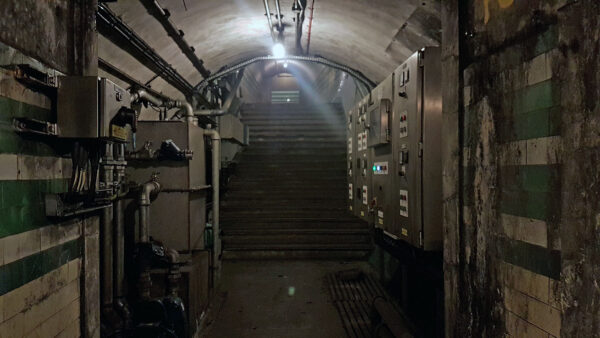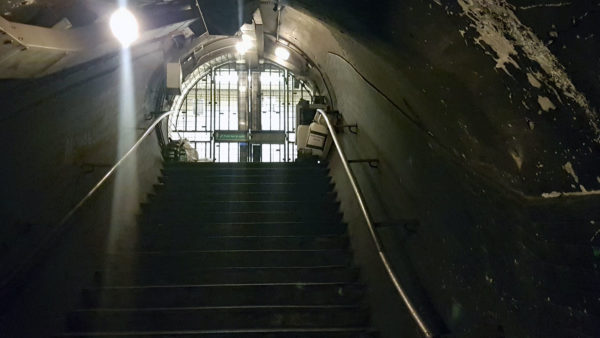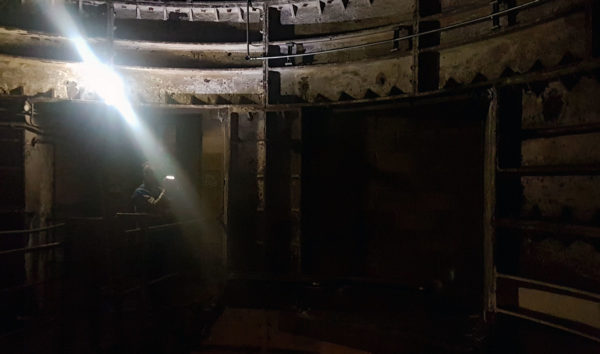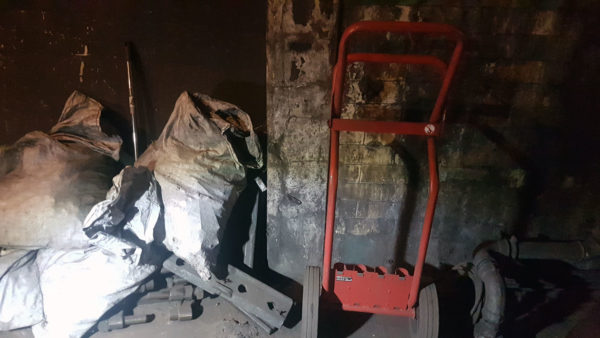A hidden series of tunnels and lift shafts lie out of sight under Piccadilly Circus, and now tours are offered of these hidden spaces. This is one of the London Transport Museum’s increasingly popular — and fortunately for the museum, lucrative series of Hidden London tours that take people behind the scenes of working tube stations.
Piccadilly Circus station, a huge round space underneath the road is the second station of that name, and the original was rather more conventional, being over to one side on the streets, and had lifts down to the platforms.
The station was soon struggling to cope with passenger demand, and in 1922 construction of the replacement much larger station started underneath Piccadilly Circus. During the works, the famous statue of — not Eros — but Anteros was removed as they needed the site it stood on for a deep construction shaft to get down to the platforms and provide access for man, machine, and to remove muck.
The deep shaft remains — as an emergency staircase from the ticket hall down to the Piccadilly line.
The old station building designed by Leslie Green finally closed for traffic on 21 July 1929, and was demolished in the 1980s when the large building on the corner of Jermyn Street, Piccadilly and Haymarket was constructed.
However, deep underground, the remnants of those old tunnels and lifts remain.
It’s not the largest of the Hidden London tours, as there’s frankly not a lot left — but it still soaked up over an hour of time as the guides give a history of how the tunnels were used as shelters during wartime, and later for storage of precious artworks.
Passing through normally locked doors at the end of the Piccadilly line platforms, and down stairs, there’s effectively a U-shaped set of tunnels leading to the lift shafts.
Although the ends of the tunnels were painted black, around the corner and the pale colours of the original Leslie Green tiles are clear to see. As with most so-called disused tunnels in tube stations, these are in use — as storage space for the engineering works that need to take place on the tube lines.
So walking around boxes or equipment, and in one place a pile of electrical conductors, all seemingly about to be used as they were shiny and clean and not covered in dust.
An old set of stairs left over from the original station now serves as a ventilation shaft, with hot air buffeting around you in sharp contrast to the cool breeze felt in the tunnels.
A curiosity is that the lift and tunnels are all lower than the Piccadilly line platforms, with stairs on one side and a slope on the other leading up to the platforms. Quite why the station was built like that is a mystery.
As mentioned earlier, it’s not the largest site to visit on the Hidden London tours series, but still exciting to see a bit of London that the general public haven’t seen since the end of WW2.
The Hidden London tours are available here.





















Great Pictures! I always enjoy exploring these abandoned and disused tunnels of open tube stations that are just beyond the passenger’s reach and often go unnoticed by commuters! I have shown my picture of these disused stations here: https://www.instagram.com/to_the_tube_trains/
Some fascinating snippets were to be had from the excellent guide on this tour. We take for granted the lighting but as the flagship station in the early 20thC, it was the first ever to have flourescent tubes and the change from really dim lamps was like moonlight to daylight apparently. Imagine navigating the passages in the near dark.
Also, whilst noting the stories of the fluffers and the fantastic train-swallowing vacuum cleaner, I’d never appreciated just how much dust there is to be had until going through the grille to the lift tunnels. Looking back down one such, the air was thick with a grey cloud; truly evocative and well worth the forty quid.
I went to this tour in September, it was good ,I saw parts of the station not hidden from view that I’ve been longing to see, the only downfall the tour didn’t include the Bakerloo disused lift passages.